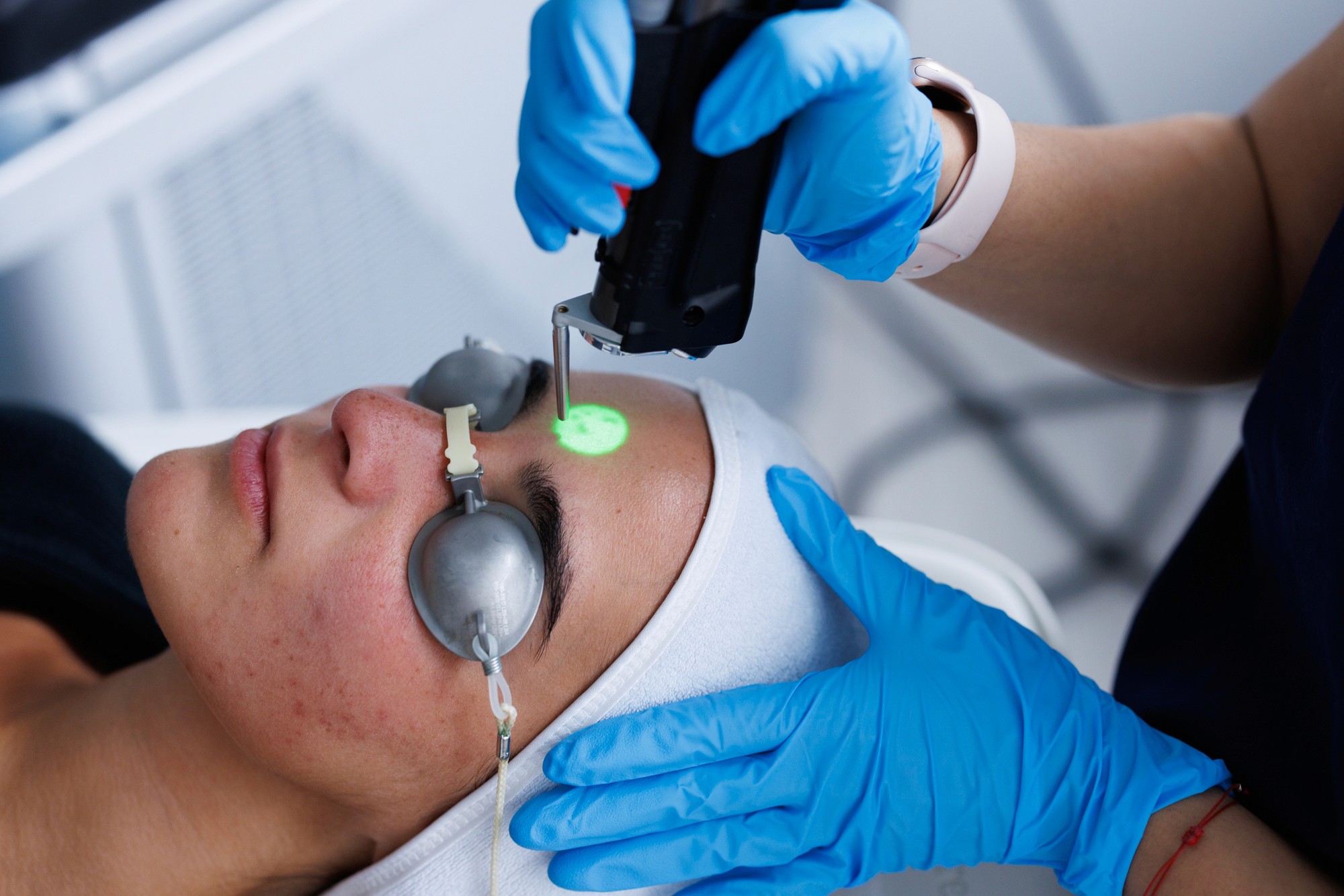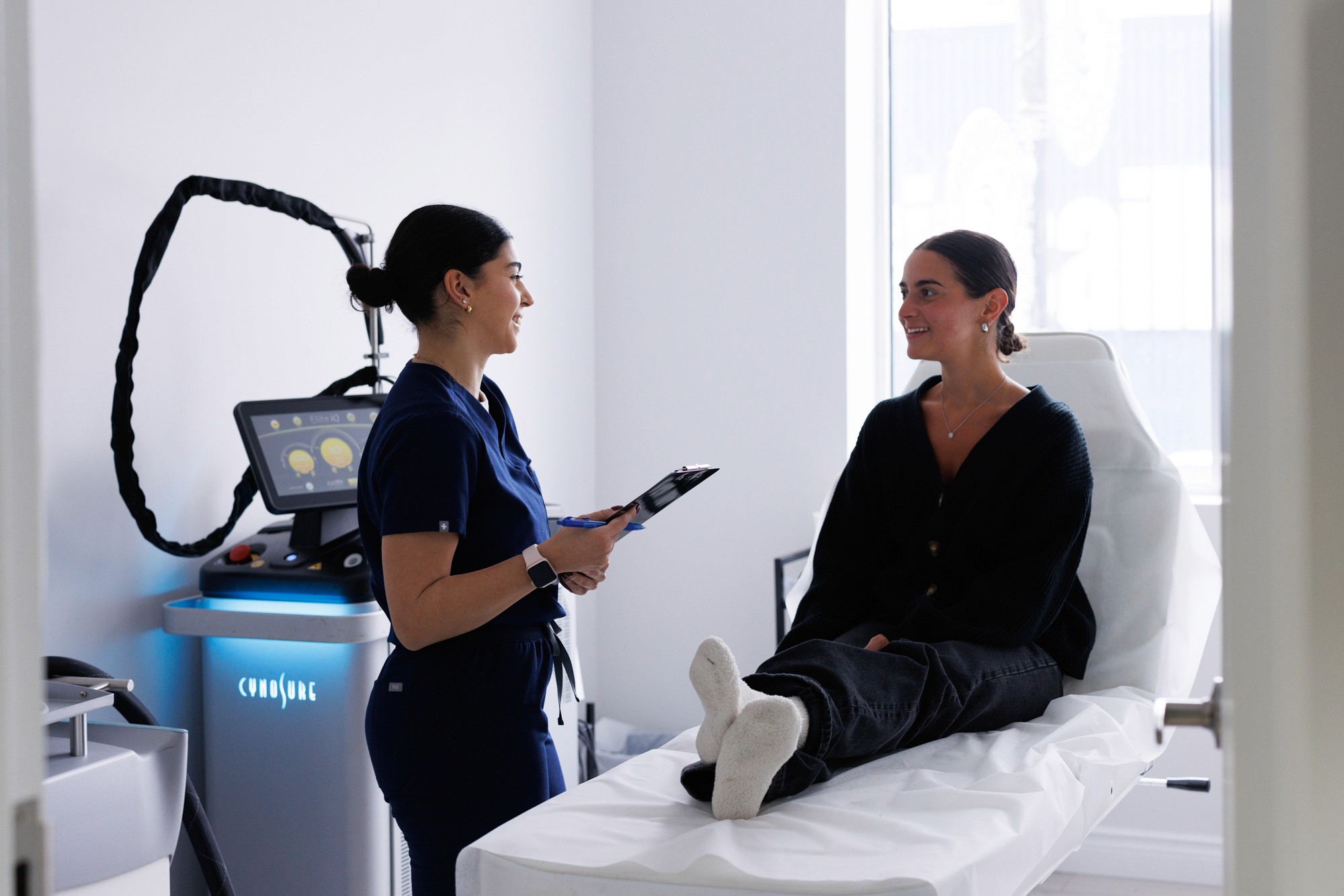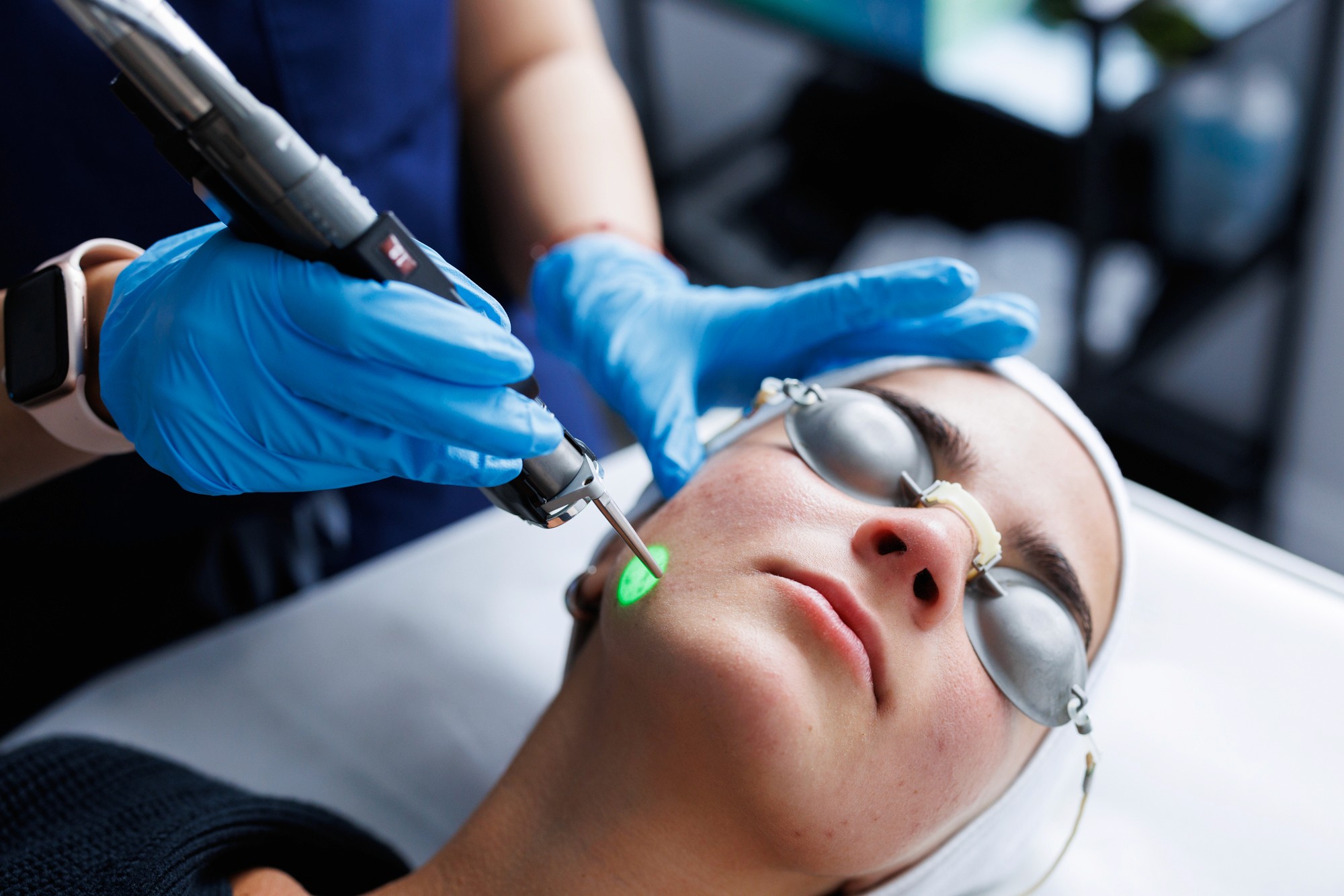Comment ça fonctionne :
Le 5D Laser Lifting avec Elite IQ est une procédure avancée qui combine plusieurs technologies de pointe pour offrir des résultats de lifting cutané spectaculaires sans chirurgie ni temps d'arrêt. Ce traitement utilise un laser fractionné pour cibler précisément différentes couches de la peau, stimulant la production de collagène et d'élastine pour un raffermissement global et une amélioration de la texture de la peau.
Traitez :
Rides, Ridules, Relâchement cutané, Texture de peau irrégulière, Pores dilatés, Teint terne et inégal
Pourquoi mediluxe ?
Une technologie de pointe
Notre clinique est équipée du système Elite IQ, une technologie de pointe qui combine plusieurs longueurs d'onde laser pour un traitement précis et efficace. Le 5D Laser Lifting avec Elite IQ offre des résultats exceptionnels en toute sécurité.
Un traitement personnalisé
Chaque patient est unique, c'est pourquoi nous offrons des traitements personnalisés adaptés à vos besoins spécifiques et à votre type de peau. Notre équipe expérimentée évalue votre peau et crée un plan de traitement sur mesure pour atteindre vos objectifs esthétiques.
Confort et sécurité
Votre confort et votre sécurité sont notre priorité absolue. Notre équipe qualifiée veille à ce que votre expérience soit aussi agréable que possible, en utilisant des techniques avancées pour minimiser tout inconfort pendant le traitement.
Plus sur la procédure
Contre-indications
Grossesse ou allaitement
Infections cutanées actives ou conditions inflammatoires (comme l'acné ou l'eczéma)
Coup de soleil récent ou exposition excessive au soleil
Utilisation de médicaments photosensibilisants
Antécédents de cicatrices chéloïdes
Cancer actif ou antécédents de cancer de la peau
Conditions cutanées sévères (comme le lupus ou le psoriasis)
Plaies ouvertes ou lésions cutanées non traitées dans la zone à traiter
Effets secondaires
Rougeur
Gonflement, ecchymose
Sensibilité ou inconfort
Desquamation ou peau sèche
Temporaire assombrissement de la peau (hyperpigmentation)
Sensibilité au soleil
Nombre de séances
3 - 6
Durée d'une séances
30 minutes
Durée des résultats
6 - 12 mois
À partir de
500$
Temps de rétablissement
<24h ou aucun
Zones du corps
Visage
Les patients nous demandent…
LEs prochaines étapes
1. Consultation
Prenez rendez-vous pour une consultation avec l'un de nos experts en dermatologie esthétique pour évaluer votre peau et discuter de vos objectifs esthétiques.
2. Traitement
Chaque séance de Laser 5D Lifting dure environ 30 à 60 minutes. Votre praticien utilisera le Elite IQ pour traiter la zone cible en suivant les paramètres définis pour votre peau.
3. Résultats et suivi
Les résultats s'améliorent progressivement avec chaque séance. Un suivi régulier et des séances d'entretien aideront à maintenir les résultats.





